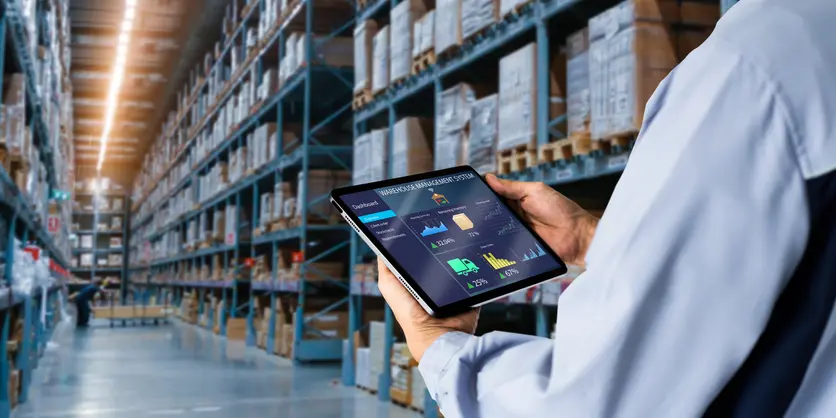If you’re still managing your inventory with spreadsheets, you know the pain. But beyond the simple inconvenience and endless hours spent cross-referencing numbers, manual planning methods create critical, and often hidden, business problems. The financial impact of overstocking is a constant drag on your business, with high carrying costs and cash flow tied up in products that aren’t selling. On the flip side, stock-outs lead to lost sales, angry customers, and long-term damage to your brand’s loyalty.
Then there’s the high probability of human error. One misplaced decimal point or a copy-paste mistake can throw off your entire purchasing plan. Add to that the lack of real-time data—by the time you’ve finished your count, the numbers are already out of date—and it becomes clear that making informed decisions is nearly impossible. It’s time to reframe the conversation. Switching to dedicated inventory planning software isn’t just another cost; it’s a fundamental investment in your company’s efficiency, accuracy, and future profitability.
Core Features of an Effective Inventory Planning System
The right software does more than just count your stock. It transforms inventory from a logistical headache into a strategic asset. To do this, it must have a core set of features designed to automate tedious tasks and optimize your key processes. Here are the non-negotiable functionalities you should be looking for.
Demand Forecasting and Optimization
Think of this as the software’s “brain.” A good system doesn’t just track what you’ve sold; it uses that historical sales data, along with trends and seasonality, to accurately predict future demand. This proactive approach is a game-changer. This feature automatically calculates optimal reorder points and dynamic safety stock levels for each product, ensuring you order the right amount of stock at precisely the right time, freeing you from constant guesswork.
Real-Time, Multi-Channel Inventory Sync
This is all about creating a single, reliable source of truth. In today’s market, you’re likely selling across multiple channels—your Shopify store, Amazon, a physical retail location, maybe even a wholesale portal. An effective inventory system must sync your stock levels in real-time across all of these channels and warehouses. This is absolutely critical for preventing the dreaded overselling scenario (selling an item you don’t actually have) and providing an accurate stock view to both your team and your customers.
Automated Purchasing and Supplier Management
Efficiency is the name of the game here. The software should be able to take the data from its forecasting engine and automatically generate purchase orders when stock levels hit their reorder points. This eliminates hours of manual work and reduces the risk of forgetting to order a critical item. Many systems go a step further and help you manage all your supplier information, track lead times, and compare costs, streamlining the entire replenishment cycle from start to finish.
Top 8 Inventory Planning Software
This is the core of the guide—a curated list of the best software solutions on the market today, each designed to replace manual planning. We’ll cover what each one does best, who it’s designed for, and key characteristics like ease of use and typical integration strengths to help you quickly identify potential matches for your business.
NetSuite ERP
NetSuite is the all-in-one, enterprise-grade solution. It’s much more than just an inventory tool; it’s a full business management suite that handles inventory, finance, CRM, and operations in a single, powerful system.
Best for: Scaled, medium-to-large businesses that need a unified platform to run their entire company and are ready to move beyond a collection of separate apps.
Cin7
Cin7 is the go-to specialist for multi-channel brands. Its core strength is its ability to connect complex sales environments—e-commerce stores, wholesale B2B portals, retail POS systems, and third-party marketplaces—into one cohesive and manageable inventory system.
Best for: Retailers and wholesalers who are serious about selling across multiple online and offline channels and need to keep their stock perfectly synchronized.
Zoho Inventory
Zoho Inventory is an ideal entry point for small to medium-sized businesses (SMBs). It’s widely known for being incredibly user-friendly, affordable, and seamlessly integrated into the extensive Zoho ecosystem of business apps (like Zoho Books and Zoho CRM).
Best for: SMBs, particularly e-commerce businesses, looking for a powerful yet intuitive tool that can grow with them without an enterprise-level price tag.
Intuendi
Intuendi is a specialist tool laser-focused on demand forecasting and inventory optimization, powered by AI. Its core strength is using Artificial Intelligence to generate highly accurate demand forecasts and automated replenishment proposals designed to drastically reduce stock-outs while minimizing overstock. It is built to integrate with your existing ERP or e-commerce platform.
Best for: Data-driven e-commerce and retail businesses that want to leverage best-in-class AI forecasting to gain a competitive edge.
Katana MRP
Katana is the go-to solution for small-scale manufacturers and makers. It’s built from the ground up to manage the unique complexities of production, handling raw materials, work-in-progress (WIP), and finished goods in one visual and intuitive platform.
Best for: Direct-to-consumer (D2C) manufacturers, craft businesses, and any company that makes its own products and needs total visibility over its production schedule and stock.
QuickBooks Commerce (formerly TradeGecko)
QuickBooks Commerce is the premier choice for e-commerce businesses that run on the QuickBooks accounting platform. It offers robust inventory and order management features specifically designed for the needs of modern online sellers and wholesalers, with deep roots in the QuickBooks ecosystem.
Best for: E-commerce brands that are deeply integrated with QuickBooks and want an inventory solution that feels like a natural extension of their accounting software.
Odoo
Odoo stands out as a flexible, modular, and open-source platform. This unique structure allows businesses to start with just the inventory app and then add other modules—like CRM, accounting, or manufacturing—as their needs evolve. It’s highly customizable to fit specific workflows.
Best for: Businesses that need a tailored, scalable solution and prefer a modular “build-your-own-ERP” approach rather than a rigid, all-in-one system.
Fishbowl Inventory
Fishbowl is the manufacturing and warehousing power-up for QuickBooks users. It bolts onto QuickBooks, adding the advanced inventory features it lacks, such as barcode scanning, complex manufacturing orders, and multi-location warehouse management.
Best for: Manufacturers and distributors who have complex warehousing needs but are committed to using QuickBooks for their accounting.
How to Choose the Right Software for Your Business
Now that you’ve seen the options, how do you make the right choice? This focused, two-step framework will help you apply this information to your specific situation, ensuring you select a tool that serves you both now and in the future.
Match the Software to Your Business Model
First things first, clearly define your primary business model. Are you a pure e-commerce player? A hands-on manufacturer? A multi-channel retailer juggling online and offline sales? A wholesale distributor? This is the most critical factor in your decision. For example, a manufacturer must prioritize a tool built for production, like Katana or Fishbowl. A business whose main goal is cutting-edge forecasting would naturally lean towards a specialist like Intuendi. This alignment prevents you from choosing a powerful tool that simply doesn’t fit your core day-to-day workflows.
Verify Critical Integrations and Scalability
Next, map out your existing “tech stack.” Make a list of the essential platforms you rely on every day—your e-commerce platform (e.g., Shopify, BigCommerce), your accounting software (e.g., QuickBooks, Xero), any marketplaces you sell on (e.g., Amazon Seller Central), and any third-party logistics (3PL) services you use. The inventory software you choose must integrate seamlessly with these critical tools to avoid creating new data silos and more manual work. Finally, think about your 3-year growth plan. Will the software you’re considering be able to support more users, more products, a higher order volume, and new sales channels as your business scales? Don’t just solve for today; plan for tomorrow.
Your Next Step to Automated Inventory
Let’s be clear: moving on from manual inventory planning isn’t just about convenience. It’s a critical strategic decision that directly impacts your profitability, efficiency, and ability to grow. The right software provides the forecasting power, real-time visibility, and automation you need to stop reacting to problems and start managing your business proactively. Your next step is clear.






